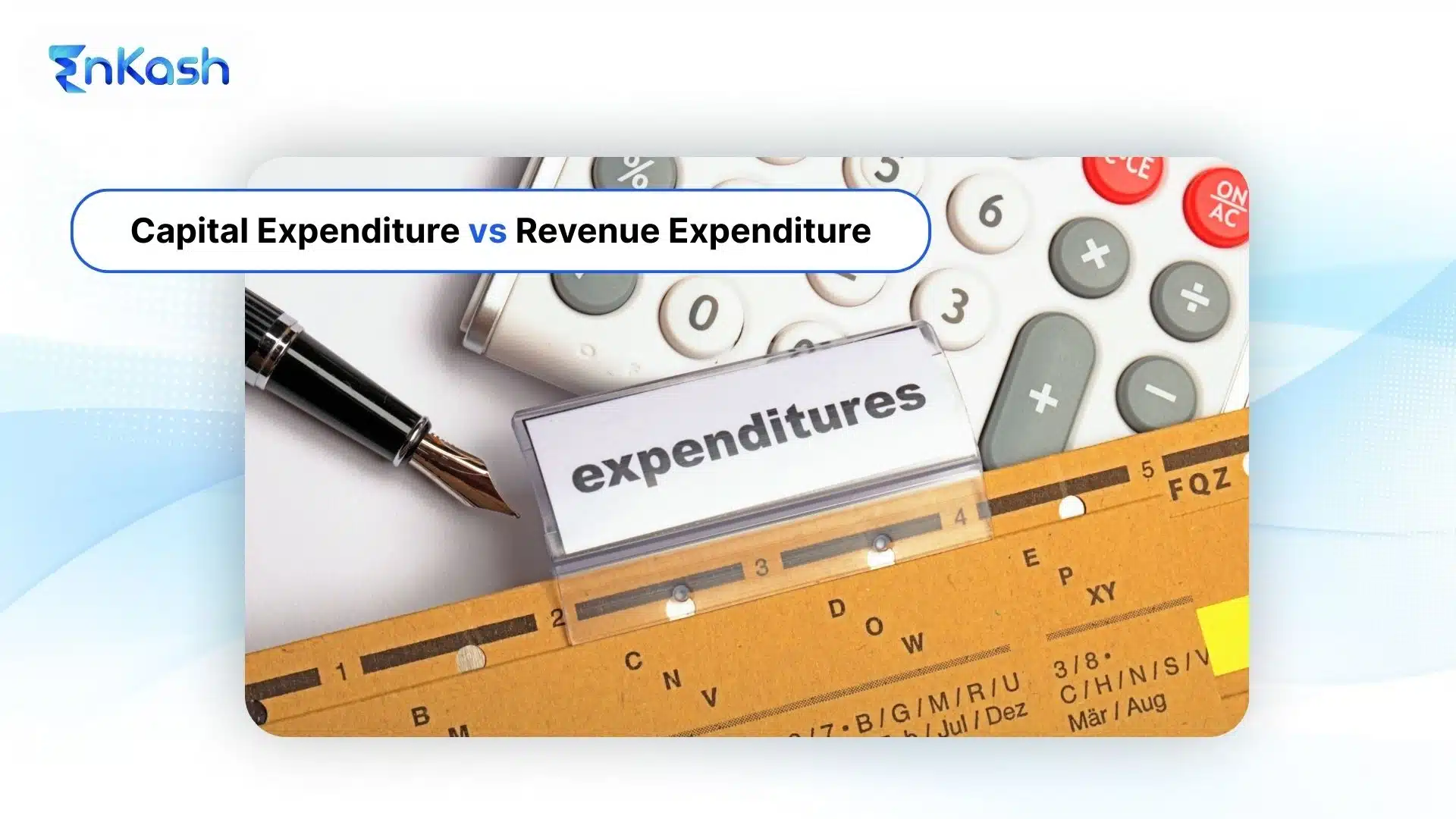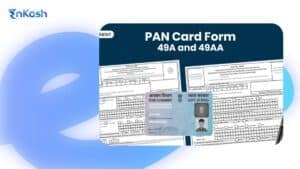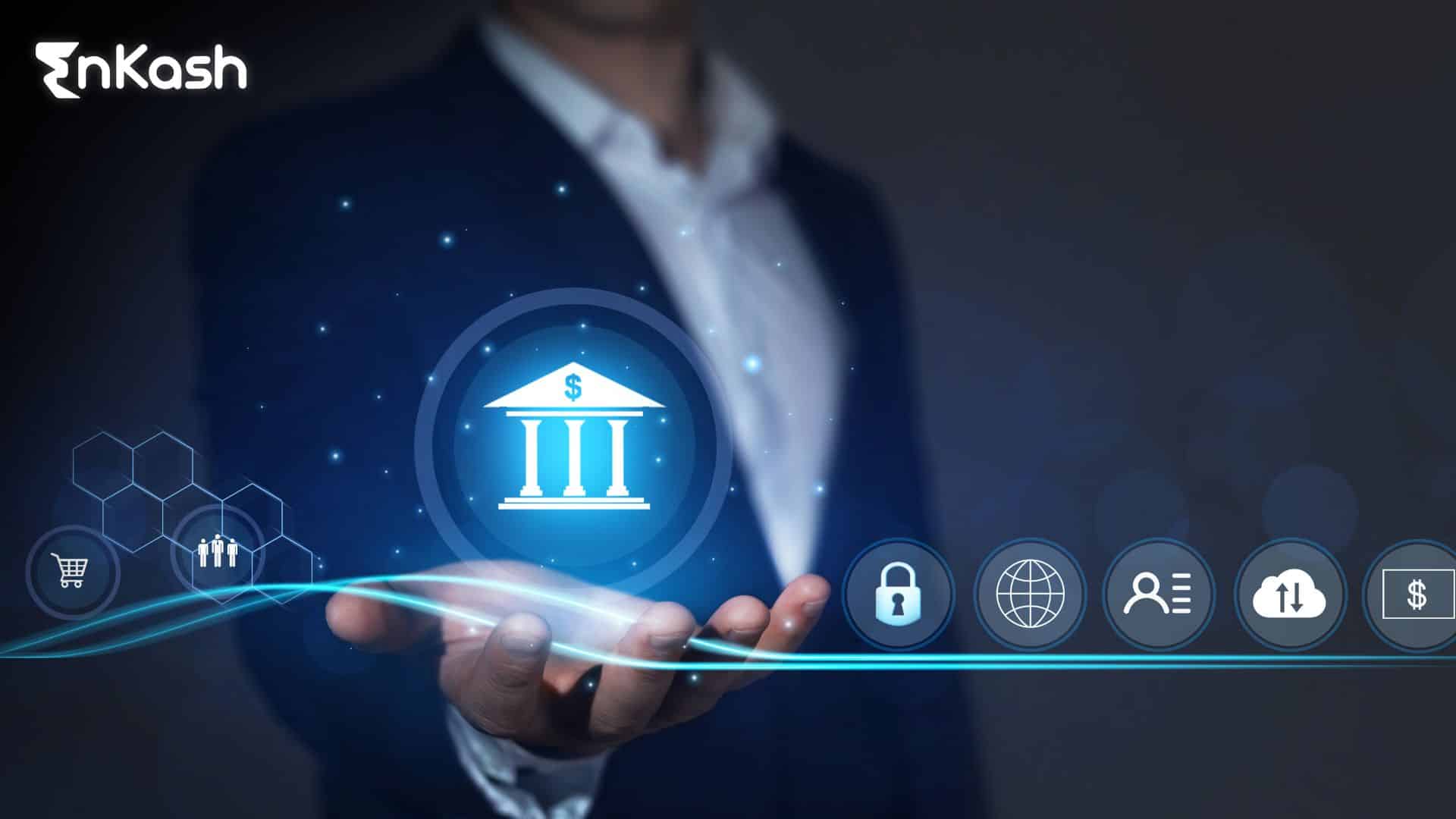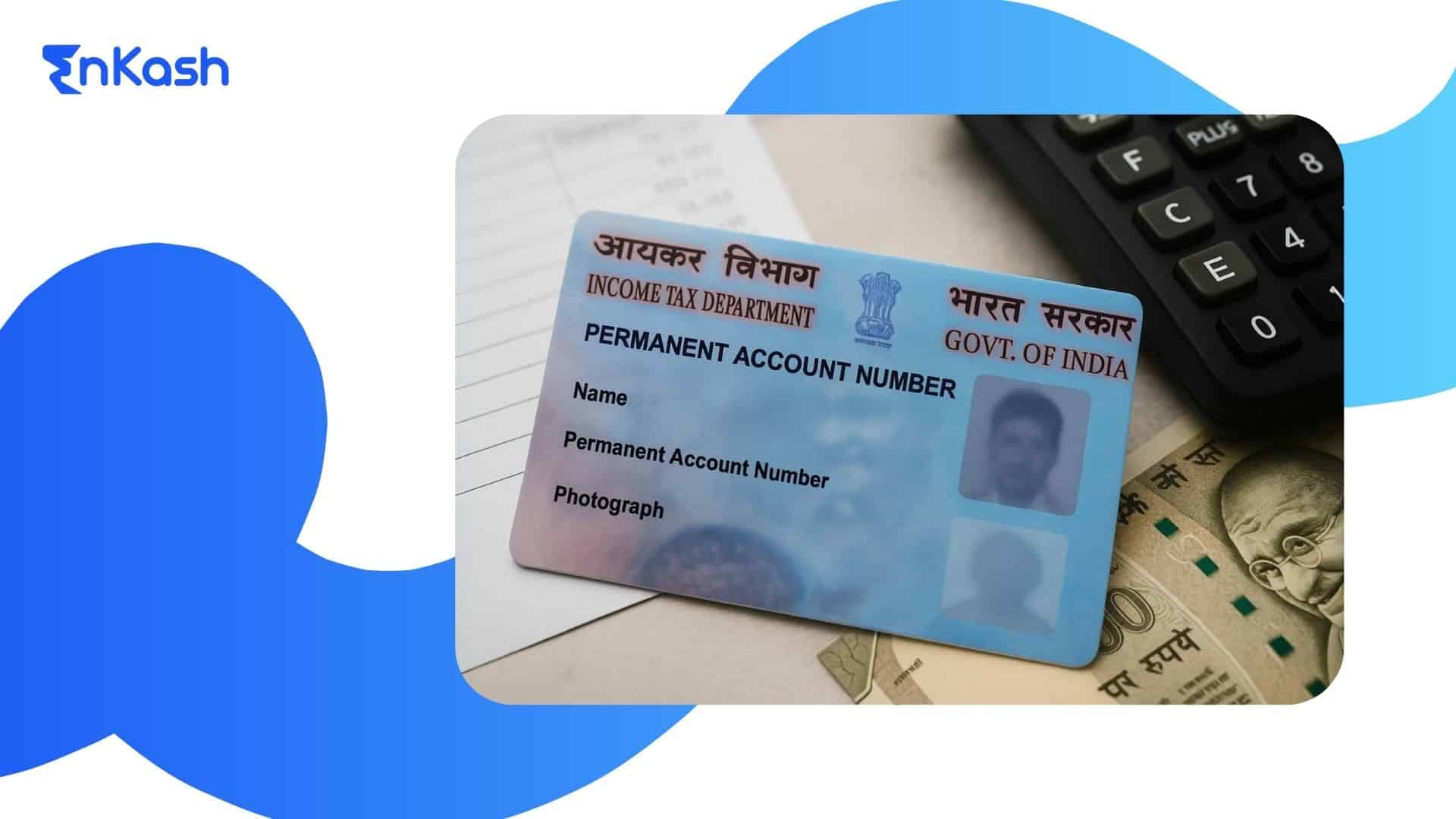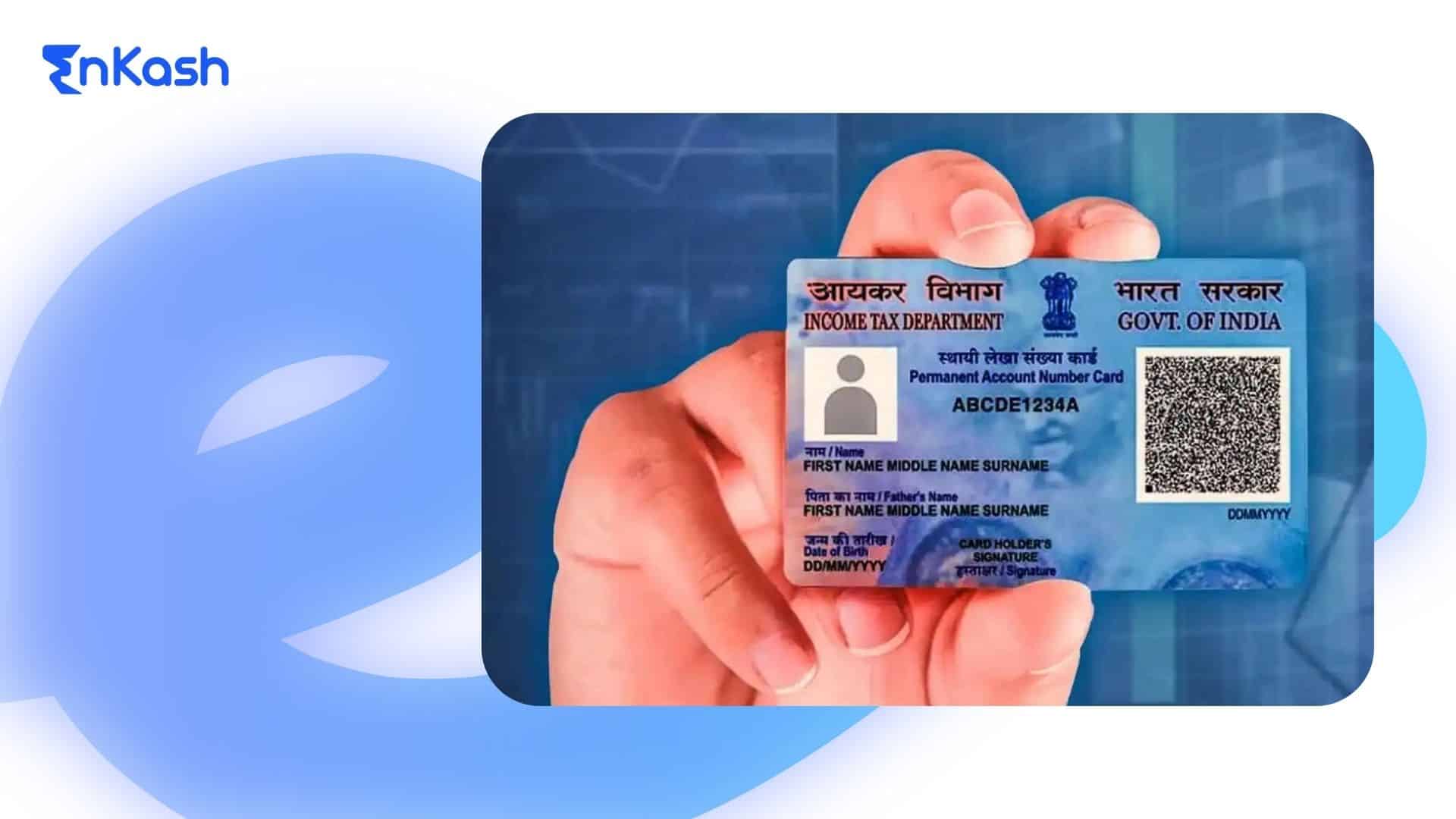Introduction
Every spending decision falls into two buckets: capital expenditure or revenue expenditure. Capital expenditure creates assets on your balance sheet, spreading costs through depreciation over the years. Revenue expenditure hits your Profit and Loss immediately, reducing current profits. This split is important for three reasons: clean financial records that reflect reality, smarter cash management that separates lump-sum asset purchases from steady operating expenses, and zero compliance headaches from inflated assets or misstated profits. Use a simple test for any expense: Does it create a distinct asset? Will the benefit last beyond one year? Does it increase capacity or extend useful life? Is it necessary to make a new asset operational? Yes means capital expenditure. No means revenue expenditure.
In this blog, you will learn the meaning, examples, and accounting treatment of capital and revenue expenditure, how to classify costs correctly, and practical guidance to maintain accurate financial records, manage cash flow, and avoid tax or audit issues.
What is Capital Expenditure?
In business finance, capital expenditure refers to the money a company spends on acquiring or improving assets that will last for more than one year. These aren’t everyday costs like rent or wages. They are long-term investments made today so the business can grow or operate more efficiently tomorrow.
It is like renovating your house. Repainting walls is a short-term cost. Building an extra floor is an investment that adds lasting value.
Characteristics of Capital Expenditure
- Long-term usefulness: benefit stretches across years
- Asset creation or upgrade: new asset or major improvement
- One-time or infrequent expenses
- Shown on the balance sheet and depreciated over time
Capital Expenditure Examples
- A restaurant in Delhi installs a modern kitchen setup
- A logistics startup in Bangalore invests in delivery trucks
- An IT firm in Hyderabad sets up a server room
The Capital Expenditure Formula
CapEx = PPE at End – PPE at Beginning + Depreciation
For example, machinery worth ₹50 lakh grows to ₹65 lakh after buying equipment and accounting for depreciation. The ₹15 lakh increase is capital expenditure
Why Capital Expenditure is important for MSMEs
- Impacts tax treatment—deducted gradually through depreciation
- Big-ticket items affect long-term cash flow
- Indicates growth strategy, tracked by banks and investors
What is Revenue Expenditure?
Revenue expenditure covers daily routine costs within the year to operate the business. These expenses do not create or extend an asset in a major way. They help run operations today so the business can earn revenue today.
Buying a delivery van is a capital expenditure. Paying for diesel, tolls, and servicing is revenue expenditure.
Features of Revenue Expenditure
- Supports daily operations
- Does not create a new asset
- Does not significantly extend an asset’s life
- Recurs often—monthly, quarterly, or as needed
- Recorded fully in the P&L of the same period
Revenue Expenditure Examples
- Rent, electricity, water, and internet
- Salaries, contractor payments, raw materials
- Routine repairs, repainting, and minor part replacements
- Marketing, sales commissions, platform fees
- Travel, lodging, insurance, software subscriptions
- Accounting, legal, and audit fees.
Why Revenue Expenditure is important
- Immediate impact on profit reflects the true cost of business
- Clean classification shows unit economics, margins, and cash needs
- Errors in classification distort profit and raise audit issues.
- Regular review helps control costs and improve cash flow.
Capital Expenditure vs Revenue Expenditure
You make two kinds of spending in business. One builds long-term assets. The other keeps daily operations running. You need to tell them apart quickly and record them correctly. This section gives you a simple way to do that.
Ask two questions. Does this spending create or significantly improve a long-term asset? Does the benefit last beyond one year? If you answer yes to both, treat it as capital expenditure. If not, treat it as revenue expenditure.
Aspect |
Capital expenditure |
Revenue expenditure |
|---|---|---|
Purpose |
Create or improve a long term asset |
Run day-to-day operations |
Benefit period |
More than one year |
Current accounting period |
Financial statement impact |
Add to the balance sheet as an asset |
Charge to Profit and Loss |
Subsequent treatment |
Depreciation or amortization over useful life |
Expenses are fully in the same year |
Nature |
Non-recurring or infrequent large outlay |
Recurring or frequent operating cost |
Examples |
Machinery Vehicles Buildings Plant upgrades Long-term software license or implementation cost tied to the new system |
Rent Utilities Salaries Raw materials Routine repairs Subscriptions Advertising |
Effect on profit |
Limited impact today due to capitalization; profit reduces gradually through depreciation |
Direct impact today; reduces the current year’s profit fully |
Cash flow view |
Big cash outflow in purchase periods |
Ongoing cash outflows spread through the year |
Tax treatment |
Deduction claimed through depreciation over time |
Deduction claimed fully in the year of spending |
Approval and planning |
Usually needs budget approval and payback analysis |
Typically managed within operating budgets |
A decision framework you can use
- Identify the asset. If the spend creates a separate, identifiable asset, lean toward capital expenditure.
- Check useful life. If the benefit lasts beyond twelve months, lean toward capital expenditure.
- Assess improvement. If the spend increases capacity, efficiency, or useful life in a significant way, capitalize it.
- Test materiality. Small tools or low value items that technically last more than a year can still be expensed based on your capitalization policy and threshold. Document the threshold and apply it consistently.
- Confirm readiness. Costs necessary to bring a new asset to working condition can be capitalized. This can include installation, delivery, site preparation, and initial testing.
- Separate maintenance from upgrades. Routine repairs and maintenance that restore the original condition count as revenue expenditure. Upgrades that change performance in a meaningful way count as capital expenditure.
- Review contracts. For software and IT, read the license terms. Annual or monthly subscriptions are revenue expenditure. A perpetual license or implementation that creates a long-term system can be capitalized when it meets recognition criteria.
Impact on cash flow and operations
- Your classification changes how you read profitability and plan cash.
- Capital expenditure ties up cash in assets. You need to plan funding. Use term loans or equipment finance when possible. Avoid using only working capital lines for large asset buys because it squeezes daily cash.
- Revenue expenditure affects monthly burn. Track trends by category. Watch for seasonal spikes. Use simple budgets and variance checks to catch drift early.
- Depreciation from capital expenditure lowers profit in future periods. Factor this into pricing and margin planning so you do not get surprised by lower reported profits next year.
- Expensing operational costs now gives a cleaner picture of unit economics. This helps in pricing decisions and in conversations with buyers or investors who want to see true margins.
Accounting Treatment of Capital Expenditure
You handle capital expenditure differently from your daily costs. You put it on your balance sheet as an asset. Then you spread that cost over the years you’ll use it through depreciation. This gives you a cleaner view of your real profit each year.
How You Record It
- Get the Full Cost Right Add up everything you need to make the asset work. Start with the purchase price. Include delivery, installation, site prep, customs duty, testing, and setup fees. Don’t add your regular staff costs or ongoing maintenance contracts.
- Set Up Your Asset Records Put the asset in your register with a clear description, where it sits, total cost, and the date you can start using it. Pick how long it will last based on your policy. Start depreciation when the asset is ready to work, not when you first turn it on.
- Handle Complex Assets Some assets have parts that wear out at different speeds. Your factory might have a main machine that lasts 10 years and computers that last 5 years. Track these separately. When you upgrade something that adds real capacity or extends its life, capitalize it. Regular fixes and maintenance stay as expenses.
What Happens to Your Financial Statements
Your balance sheet shows the asset at its original cost minus all the depreciation you’ve taken. Each year, the net value drops as you add more depreciation.
Your profit statement only gets hit with the yearly depreciation expense. You spread the big purchase across all the years that benefit from it. This matches your costs with the periods that actually use the asset.
When you sell or scrap the asset, you remove both the original cost and all accumulated depreciation from your books. Any difference between what you get for it and its net book value becomes a gain or loss.
Depreciation Methods
Straight line works for buildings and furniture. You take the same amount each year. Written down value hits you harder in early years and works well for machinery that becomes less efficient over time. Units of production tie depreciation to actual use. Perfect when wear depends on how much you produce.
Indian MSME Applications
- Property: Capitalize purchase cost, stamp duty, registration, brokerage, and the money you spend getting the space ready to use. You can depreciate the building but not the land.
- Vehicles: Include the on-road price and registration in your asset cost. Fuel, insurance, and regular service stay as operating expenses.
- Machinery: Capitalize the equipment cost plus installation, electrical work, foundation, and testing. If you import it, add freight, transit insurance, and customs duty. Major parts that boost capacity get capitalized. Regular spare parts don’t.
- Software: Perpetual licenses and implementation costs that create a working system can be capitalized when they meet the rules. Monthly subscriptions, support, and maintenance stay as expenses.
Implementation Process
Set a minimum amount for capitalizing assets. Maybe Rs 25,000. Anything below that gets expensed even if it lasts more than a year. Keep an approval process for big purchases. Get quotes and think about payback time.
Update your asset register every month. Match it to your general ledger. Check additions, sales, and depreciation. Do a full review once a year. Look for assets that might be impaired, sitting idle, or ready to sell.
Common Mistakes to Avoid
Don’t capitalize repairs that just bring something back to normal condition. Those are expenses. Don’t expense legitimate costs like delivery and installation that you need to make the asset work. Those belong in the asset cost.
Start depreciation when the asset is ready to use. Don’t wait until you’re using it at full capacity. Use the same useful life for similar assets. Don’t make up different lives each time.
Accounting Treatment of Revenue Expenditure
You record revenue expenditure in your Profit and Loss statement for the same period you spend the money. You don’t create an asset. You don’t spread the cost over future years. This shows the real cost of running your business right now.
How You Record It
- Check What You’re Spending On If it keeps your daily operations running and doesn’t create or improve a long-term asset, it’s revenue expenditure. Simple as that.
- Post the Full Amount Put the entire expense in the right category on your Profit and Loss. Use clear headings like rent, utilities, salaries, repairs, marketing, software subscriptions, professional fees, and travel. Don’t dump everything into miscellaneous.
- Get the Timing Right: Match expenses to the right month. If you know you owe money for this month but the bill comes next month, record it now. Fix it when the actual bill arrives.
- Handle Your Taxes For GST-eligible expenses, record your input credit correctly. Match it with your returns. For expenses like rent and professional fees, deduct tax at source where the rules require it.
What Happens to Your Financial Statements
Revenue expenditure hits your Profit and Loss in full. It cuts your current year profit immediately. It doesn’t show up as an asset on your balance sheet.
You might see related amounts owed to vendors on your balance sheet if you haven’t paid them yet, but the expense itself stays in your P and L. This immediate hit helps you measure your real margins and spot trends quickly.
Indian MSME Applications
- Rent and Utilities: Record shop rent, factory rent, electricity, and water bills monthly. Handle GST input credits correctly.
- Employee Costs: Post salaries with proper PF and ESI deductions. Handle contractor payments with TDS as required.
- Raw Materials: Record purchases when you receive materials.
- Match invoices with delivery receipts.
- Professional Services: Audit fees, legal consultation, and tax preparation costs. Deduct TDS on payments above threshold limits.
- Marketing and Operations: Local advertising, repairs that restore normal condition, travel expenses, and software subscriptions.
Implementation Process
- Set monthly bill submission cutoffs. Create accruals for known expenses when bills arrive late. Use clear expense categories that match your business needs.
- Review major expense categories monthly against the budget. Cancel subscriptions you don’t use. Keep vendor master data updated with the current PAN, GSTIN, and bank details.
- Don’t expense major equipment upgrades that actually add capacity. Don’t record next month’s expenses early just because you paid them. Keep supporting documents with your entries.
- Get your revenue expenditure classification right. Post it on time. Review it regularly. You’ll get cleaner financials and better control over your cash flow.
Common mistakes to avoid
Expensing upgrades that add capacity or useful life. Capitalize significant improvements and expense only routine repairs.
Skipping period matching and tax rules. Use prepaids for annual services, record month-end accruals, apply TDS, and reconcile GST credits. Treating subscriptions as assets or dumping costs into miscellaneous. Expense software subscriptions and use clear expense heads.
Practical Classification Examples
Manufacturing unit
- New machine. You buy a press with that lifting capacity. Treat as capital expenditure. Capitalize price, freight, installation, and testing. Start depreciation when ready for use.
- Routine spares. You replace seals and oil. Treat as revenue expenditure. Expense in the current period.
- Major overhaul. You rebuild the press and extend its useful life. Treat as capital expenditure. Capitalize and depreciate.
Retail store
- Fit out. You install racks and lighting that last several years. Treat as capital expenditure. Amortize over useful life or lease term.
- Mall maintenance. Treat as revenue expenditure.
- POS system. Perpetual license and implementation can be capitalized if your policy allows. Annual support is revenue expenditure.
Logistics
- Vehicles. Treat as capital expenditure.
- Tyres and servicing. Treat as revenue expenditure.
- GPS subscription. Treat as revenue expenditure. One-time devices may be capital expenditure.
IT and SaaS
- Development. Capitalize eligible development stage costs if your policy and standards allow. Expense research, planning, and maintenance.
- Cloud bills. Treat as revenue expenditure.
- Perpetual license plus implementation. Capitalize if criteria are met. Support stays as revenue expenditure.
Conclusion
You make stronger financial decisions when you separate capital expenditure and revenue expenditure with discipline. Capital expenditure builds assets that serve you for years. Revenue expenditure keeps your operations running today.
Keep a simple policy. Define thresholds. Set useful lives. Document how you classify gray items. Start depreciation when assets are ready for use. Expenses operating costs in the same period. Track prepaids and match costs to periods.
Use a quick test each time. Ask if the spend creates a distinct asset. Check if benefits last beyond one year. See if it increases capacity or useful life in a meaningful way. Include costs that make a new asset ready for use. If the answers are yes, record capital expenditure. If not, record revenue expenditure.
Apply this consistently. Your Profit and Loss will reflect true operating costs. Your balance sheet will show real assets. Lenders and investors will read clean numbers. You will reduce tax errors and surprises.
Review last quarter’s big spends. Reclassify mistakes. Update your policy. Train your team. Small, steady fixes give you clear books and better control over growth.
FAQs
1. What does capital expenditure mean?
Capital expenditure is money you spend to buy or improve long-term assets such as machinery, vehicles, buildings, or core software systems. You record it as an asset and depreciate it over its useful life.
2. What is revenue expenditure?
Revenue expenditure is money you spend to run daily operations such as rent, salaries, utilities, raw materials, repairs, marketing, and subscriptions. You record it in the Profit and Loss in the same period.
3. What is the capital expenditure formula?
Capital Expenditure equals Closing PPE minus Opening PPE plus Depreciation. PPE means Property, Plant and Equipment.
4. What is the difference between capital and revenue expenditure
Capital expenditure creates or significantly improves a long-term asset and gives benefits beyond one year. Revenue expenditure supports day-to-day operations and gives benefits in the current period only.
5. Can you share a capital expenditure example for an Indian SME
Buying a new CNC machine for a fabrication unit. Purchasing delivery trucks for a logistics firm. Setting up a commercial kitchen for a restaurant.
6. Are software costs capital or revenue
Treat monthly or annual SaaS subscriptions as revenue expenditure. Capitalize a perpetual license and eligible implementation costs if your policy and recognition criteria allow it. Expense support and maintenance.
7. Is staff training capital or revenue
Treat regular training as revenue expenditure. Capitalize training only if it is directly required to make a new asset ready for use.
8. How do I quickly decide capital expenditure vs revenue expenditure
Ask four checks. Does it create a distinct asset? Do benefits last beyond one year? Does it increase capacity or useful life in a significant way? Is it needed to make a new asset ready for use?
9. How do I record capital expenditure
Create the asset in your fixed asset register. Include directly attributable costs like delivery, installation, site preparation, and initial testing. Start depreciation when the asset is ready for use.
10. How do I record revenue expenditure
Post the full amount to the correct head in the Profit and Loss. Match expenses to the right month. Use prepaids for annual services. Apply TDS and reconcile GST where applicable.
11. How does misclassification affect my books and tax
Capitalizing routine costs inflates assets and understates expenses. Expensing asset costs overstates expenses now and hides future depreciation. Both create tax issues and audit queries.
12. Do I need a capitalization threshold
Yes. Set a sensible limit. Expense items below the threshold are included even if they last more than a year. Apply the rule consistently and document it in your policy.

